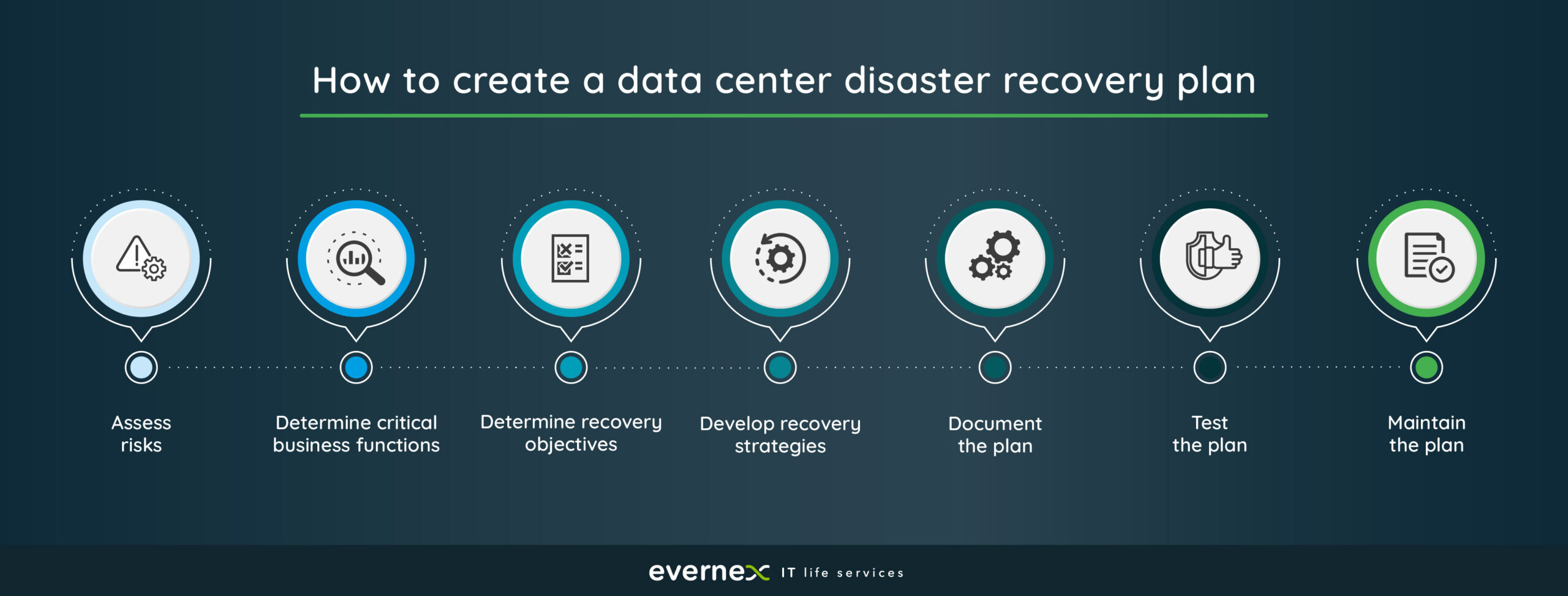In today’s business world, data centers are the backbone of most organizations. They host mission-critical applications, store sensitive information, and facilitate day-to-day operations. Any disruption to a data center’s operations can cause significant downtime, lost revenue, and damage to an organization’s reputation.
This is why having a data center disaster recovery plan is important. In this article, we will cover the key aspects of a data center disaster recovery plan checklist, including the importance of disaster recovery planning, the components of a disaster recovery plan, and how virtualization can help with disaster recovery within a data center.
What is a data center recovery plan?
A data center recovery plan is a set of procedures and policies that are put in place to ensure that an organization can continue to operate in the event of a disaster. A disaster can be any event that disrupts the normal operations of a data center, such as a natural disaster, cyberattack, or power outage.
Why do you need data center disaster recovery?
Disasters can happen at any time, and they can have a devastating impact on businesses. Downtime can result in lost revenue, damaged reputation, and even legal liabilities. For example, if a hospital experiences a data center outage, patient care can be affected, which could lead to legal and financial consequences. A data center disaster recovery plan is essential for businesses to protect themselves from these risks and to ensure that they can continue to operate even in the face of a disaster.
IT disaster recovery plan checklist
An IT disaster recovery plan checklist should include the following components:
Risk assessment. A risk assessment is the first step in creating a disaster recovery plan. It involves identifying potential risks and assessing the likelihood of those risks occurring. This step helps businesses to understand what threats they are facing and to prioritize their disaster recovery efforts accordingly.
Business Impact Analysis (BIA). A BIA is the process of identifying critical business functions and determining how long they can be offline before the business is significantly impacted. This step helps businesses to determine their recovery time objectives (RTOs) and recovery point objectives (RPOs).
Recovery strategies. Once the risks and critical business functions have been identified, the next step is to determine the recovery strategies that will be used to restore those functions in the event of a disaster. Recovery strategies may include data backup and recovery, redundant systems, and cloud-based solutions.
Plan development. The disaster recovery plan should be documented in detail and include step-by-step procedures for each recovery strategy. The plan should also include contact information for key personnel and stakeholders, as well as details of the testing and maintenance schedule.
Testing and maintenance. Regular testing and maintenance of the disaster recovery plan is essential to ensure that it remains effective. Testing should be conducted at least annually, and any issues identified should be addressed promptly.
Disaster recovery plan goals
There are various reasons why companies implement a disaster recovery plan, including:
Minimizing downtime. Downtime can be costly for businesses, so minimizing the amount of time that critical business functions are offline is a key goal of a disaster recovery plan.
Reducing data loss. Data loss can have serious consequences for businesses, so a disaster recovery plan should aim to minimize the amount of data that is lost in the event of a disaster.
Ensuring business continuity. A disaster recovery plan should ensure that key business functions can continue, even in the face of a disaster. This ensures that the business can continue to generate revenue and provide essential services to customers.
Protecting data and assets. A disaster recovery plan should aim to protect data and assets from damage or loss during a disaster. This includes physical assets such as hardware, as well as digital assets such as data.
Meeting regulatory requirements. Many industries have regulatory requirements that businesses must meet in order to operate. A disaster recovery plan can help businesses to comply with these requirements by ensuring that critical data is protected and recoverable in the event of a disaster.
How does virtualization help with disaster recovery within a data center?
Virtualization is the process of creating virtual versions of computing resources such as servers, storage devices, and networks. Virtualization can help with disaster recovery within a data center in several ways:
Faster recovery times. With virtualization, virtual machines can be quickly moved to a different physical server, reducing recovery times.
Improved flexibility. Virtualization allows for the easy creation of redundant systems, allowing for improved flexibility and resiliency in the event of a disaster.
Lower costs. Virtualization can reduce hardware costs by allowing multiple virtual machines to run on a single physical server.
Simplified management. Virtualization can simplify disaster recovery management by allowing for easy testing and maintenance of virtual machines.
Effective data center disaster recovery strategy
An effective data center disaster recovery strategy should include the following elements:
Redundancy. Redundant systems should be in place to ensure that critical business functions can continue in the event of a disaster.
Data backup and recovery. Data should be backed up regularly and stored offsite to ensure that it can be recovered in the event of a disaster.
Cloud-based solutions. Cloud-based solutions can provide additional redundancy and flexibility, allowing for faster recovery times.
Regular testing and maintenance. Regular testing and maintenance of the disaster recovery plan is essential to ensure that it remains effective.
Staff training. Staff should be trained on the disaster recovery plan and their roles and responsibilities in the event of a disaster.
By following the steps outlined in this article, businesses can develop an effective disaster recovery plan that ensures business continuity and protects data and assets in the event of a disaster.
At Evernex we partner with companies to ensure their IT infrastructure works smoothly and securely while delivering great performance at a lower cost. To find out how we can support your data center hardware, get in touch with us.





